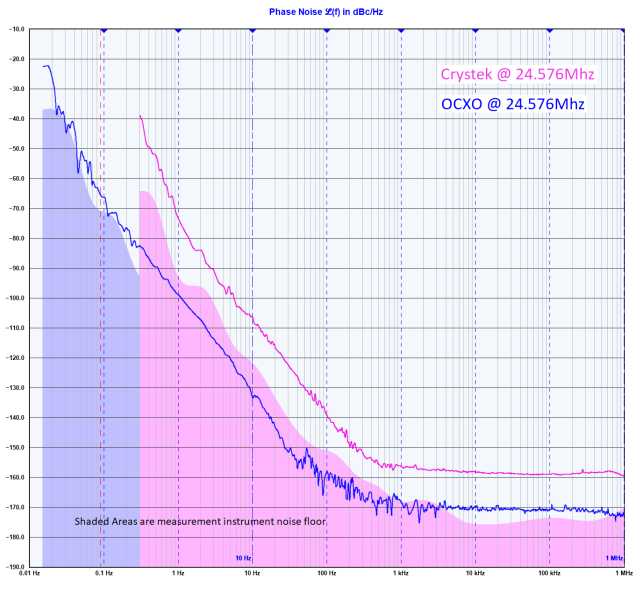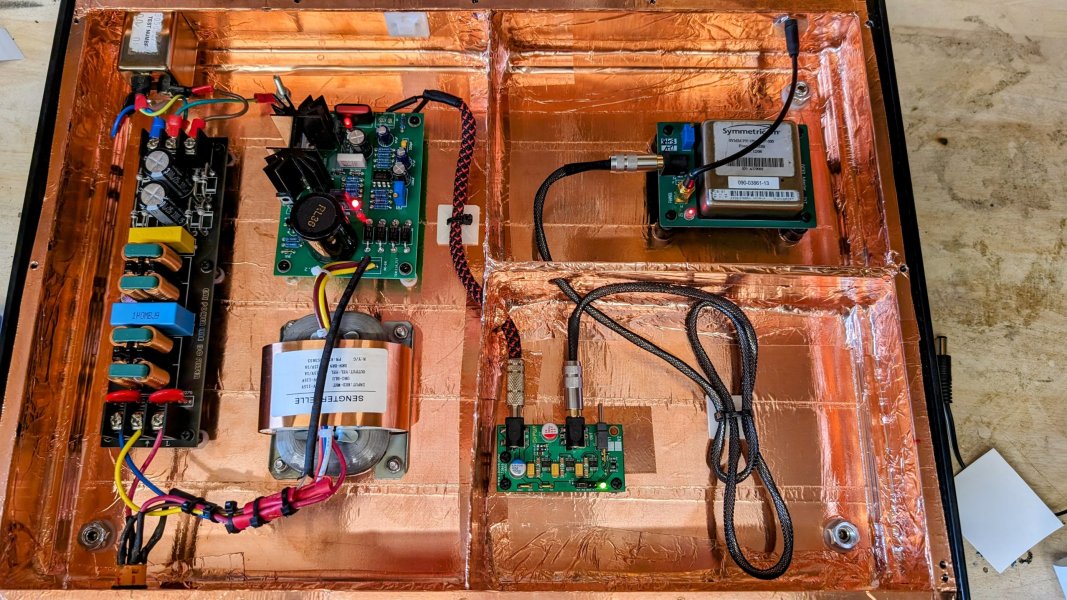Some comments:
While (actual measured at the output) phase-noise performance is very important, it is not everything.
a)
How the output of the clock is driven, how it is isolated, and its local power networks are also extemely important;
b) While a sine wave is fine (and easier to produce; most all the Asian clocks have truly crappy square waves),
a really good square wave clock will be better for all digital devices (including EtherREGEN, though with the eventual Gen2 we will use an expensive and amazing sine>square converter—to the benefit of the many users of sine wave clocks); Digital devices (chips) have an easier/more consistent time (pardon the pun) triggering off a square wave.
The Mutec clocks are the only ones we have ever seen with a proper clean square wave. (There are plenty of independently made waveform measurements of various clock brands to back this up.)
c) Aside from the finely engineered output driver circuit and tiny transformer at each isolated output of the REF10 Nano (the very same circuits as in their flagship REF10/REF10 SE120), the phase-noise specs you see for the Mutec boxes are VERY conservative. We measured a Nano at -114/-145 (dBc/Hz at 1Hz/10Hz offsets).
d) The Cybershaft clocks are very fine sine wave units--and some are quite a good value since they opened their direct web shop and introduced are entry models. I have a nice relationship with the owner, Mr. Kenji Hasgawa, and enjoy one of their mid-models in my own system. But since last years introduction of Mutec's 4-output REF10 Nano (with built in PS and jack to optionally externally power), well let's just say that it is hard to compete with...
e) Despite a lot of emphasis being put on the 1Hz offset phase-noise offset number, our tests--both listening and measured--indicate that performance around 10Hz offset is actually more critical to audible enhancement. A lot of clocks will make it to -130 or -135dbC/Hz at 10Hz, but there is some magic that seems to happen once you truly obtain (at the end of the clock cable) -140 or better.
f) Clock cable considerations are quite different for square wave clocks than for sine wave clocks! And impedance matching--of clock/cable/device--matters for square wave clocks but does not matter at all for sine wave clocks.
We wrote a
simplified paper about those topics.












